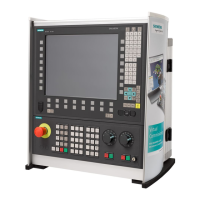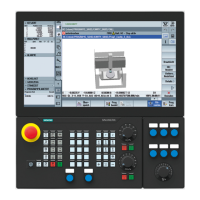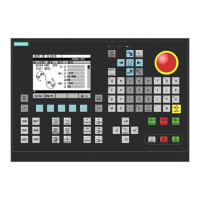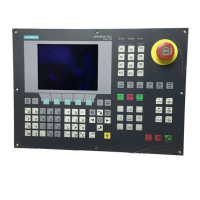Examples
4.1 Toolholder with orientation capability
Tool Compensation (W1)
Function Manual, 08/2005 Edition, 6FC5397-0BP10-0BA0
4-5
4.1.3 Example basic tool orientation
Basic orientation in the bisector
A milling tool is defined with length L1=10, whose basic orientation is in the bisector of the
X/Z plane.
N10 $TC_DP1[1,1]=120
N20 $TC_DP3[1,1]=10
N30 $TC_DPV [1,1] = 0
N40 $TC_DPV3[1,1] = 1
N50 $TC_DPV4[1,1] = 0
N60 $TC_DPV5[1,1] = 1
N70 g17 f1000 x0 y0 z0 t1 d1
N80 movt=10
N80 m30
Description of example:
In N10 to N60, a milling tool is defined with length L1=10 (N20). The basic orientation is in
the bisector of the XZ plane N40 to N60.
In N70, the tool is activated and the zero position is approached. Based on the tool length,
the machine positions X0 Y0 Z10 result in this block.
In N80, an incremental traversing movement of 10 takes place in the tool direction. The
resulting axis positions are thus X7.071 Y0 Z17.071.
4.1.4 Calculation of offsets according to location of use or workpiece
Tool with adapter
A tool with adapter and toolholder with orientation capability is defined in the following
program example. In order to simplify the overview, only length L1 is different to zero for the
additive and insert offsets and for the adapter. The offset vectors of the toolholder with
orientation capability are all zero.
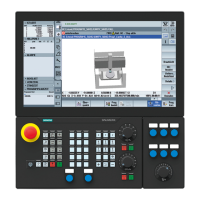
